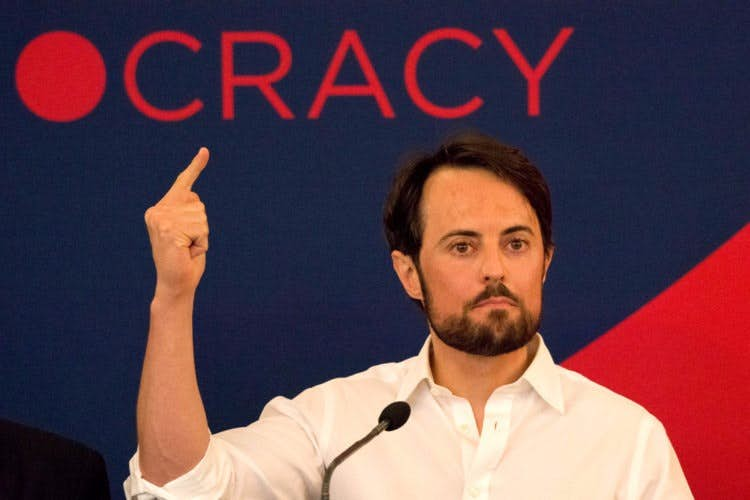What technology really means for human rights
A freer, more peaceful, and more prosperous world?
By Thor Halvorssen
October 16, 2017
This article was originally published on The Memo.
Advances in technology – like bitcoin, virtual reality, encrypted communications – have already transformed the way we interact with the world, and with each other.
But what do these new tools mean in the global struggle for liberty?
In the free world, we’ve seen how technology – from self-driving cars to bodegas with machine learning – can make our lives easier.
In countries where human rights are not respected, emerging technology has vast potential, and those who wish to accelerate the coming of a freer, more peaceful, and more prosperous world must promote the use of technology and take advantage of the enormous possibilities it presents.
Here are 5 ways tech is changing human rights advocacy, and how technologists can get involved:
1. Giving closed societies access to information on what the world is really like
Imagine growing up in North Korea.
Your entire life, you have been indoctrinated into believing Kim Jong-un’s family is godlike and unimpeachable. You’ve been fed endless lies about famine, death, and misery in capitalist countries like the US.
Meanwhile, the regime has convinced you – even if you are starving, sick, vulnerable, and isolated – that you have the best life possible on earth.
All the while, you have no civil or political rights whatsoever.
Then, someone you know obtains a smuggled flash drive filled with news and content from the outside world. (North Korea has no internet.)
Suddenly, using a cheap Chinese media player, you are watching soap operas from South Korea or Hollywood blockbusters, learning about things like romantic love and supermarkets.
It reveals the scope and depth of the dictatorship’s propaganda.
Countless North Koreans who have escaped tell stories like this, where access to even the most basic information about the outside world liberates their minds. Many of them seek freedom. But all of them who come into contact with this content realise they live under a brutal tyranny.
Once enough North Koreans are impacted, the government’s overthrow is the likely outcome.
Parallel to North Korea, activists across the world have started repurposing new and old tech – from cell phones and satellite TV, to smartphone apps and drones – to break down information blockades.
2. Humanising rights abuses
It can sometimes be difficult to understand what it’s really like for political prisoners in brutal dictatorships, or for citizens enduring the suffering brought about by governments with policies that bring about famine and civil strife.
Technology has given us a powerful way to empathise with what life is like for those who are denied fundamental human rights.
Virtual reality companies, for example, are using storytelling to build empathy for victims of rights abuses.
At the Oslo Freedom Forum in New York, Blindfold offered a VR experience that allowed users to explore Iran’s infamous Evin Prison. That same day, attendees heard former prisoner of conscience Marina Nemat talk about her experience being tortured and abused in that prison for criticising the Iranian revolution.
The VR experience let viewers understand Marina on a deeper level, building empathy and encouraging them to get involved.
Other companies, too, are harnessing new tech to humanise wars and crises that can seem abstract, using everything from video games to satellite imaging.
If we have a greater appreciation for what our fellow human beings endure in war zones, protests, and prisons, we are more likely to respond with engagement and action.
3. Keeping activists safe
While the internet age is making us more connected, engaged, and intelligent, surveillance makes us vulnerable – and that is especially true for the activists and journalists that confront human rights abuses and advocate for change.
Technologists can make an enormous difference here by creating software that protects activists’ identities online.
New apps like Whistler – which was dreamed up on the sidelines of the Oslo Freedom Forum – and pushes for end-to-end encryption, two-factor authentication, free VPNs, and more are giving activists the tools to take advantage of technology’s potential while avoiding its drawbacks.
4. Exponential tech and human rights
Silicon Valley is one of the most hopeful and creative places in the world.
Imagine if we made a concerted effort to direct that inventiveness and entrepreneurial spirit at making the world freer?
Exponential technologies – like artificial intelligence, robotics, the Blockchain – have applications to human rights advocacy that we have yet to dream up.
Take Roya Mahboob, the tech CEO from Afghanistan who has devoted herself to teaching girls computer science.
She is one of the first to adopt cryptocurrency in her fundraising, making her advocacy more transparent and allowing the women she works with to gain independence in patriarchal societies.
She is on the forefront of change because she’s taking advantage of tech’s future – and serves as a good example for other activists and their supporters.
5. Solving activists’ challenges with tech
In the absence of resources and institutional support, activists need all the help they can get – and technologists are particularly well placed to solve the most pressing challenges facing dissidents.
At the Human Rights Foundation, we are devoted to putting activists and technologists into conversation.
We’ve been travelling to conferences like DEFCON and SXSW to put human rights on the radars of white hat hackers and software engineers who can build new solutions to keep activists safe and supercharge their impacts.
With new and emerging tech, we have the chance to restructure our world and give power back to the people. Let’s get to work.
Read the original article on The Memo.
